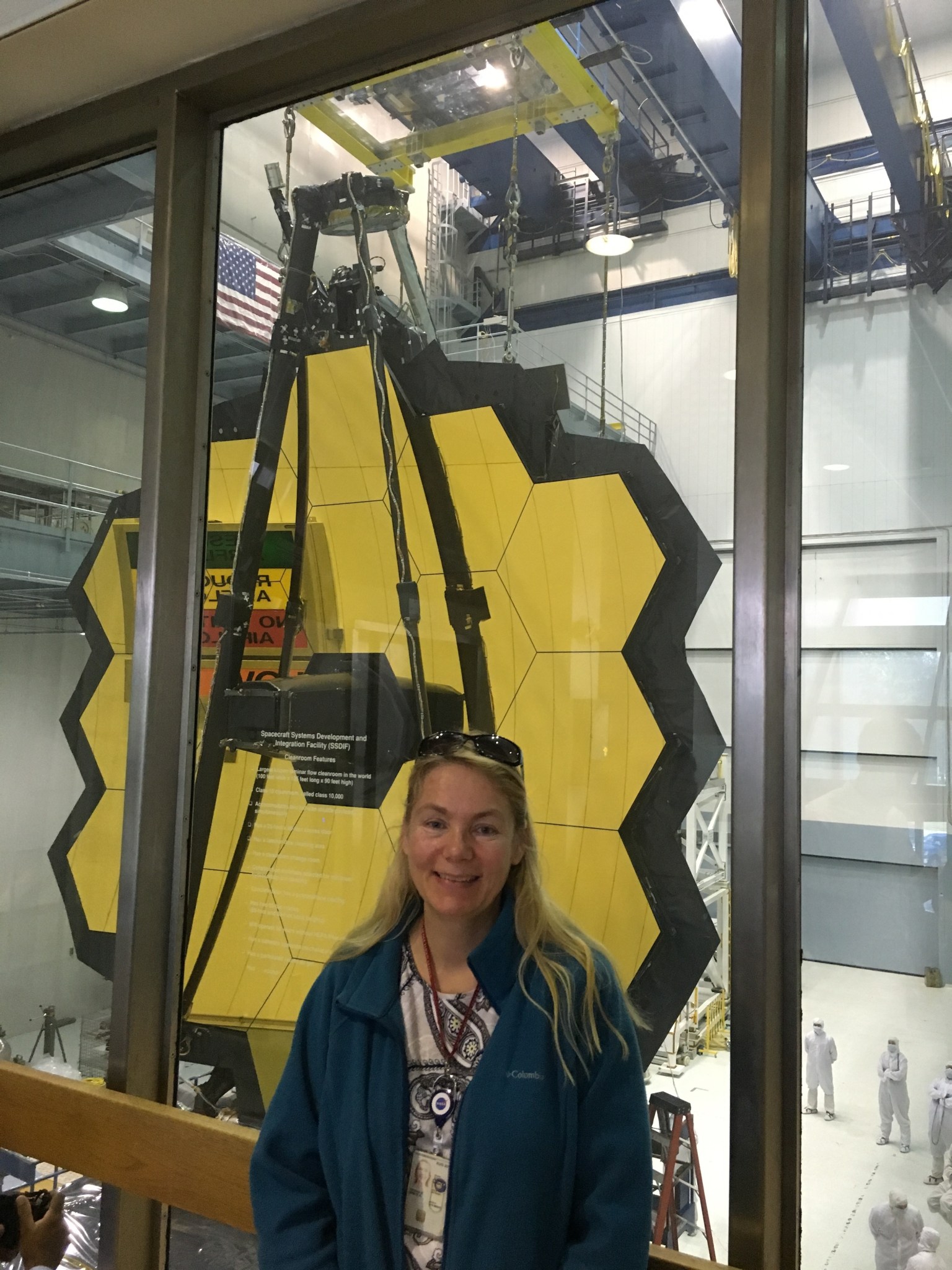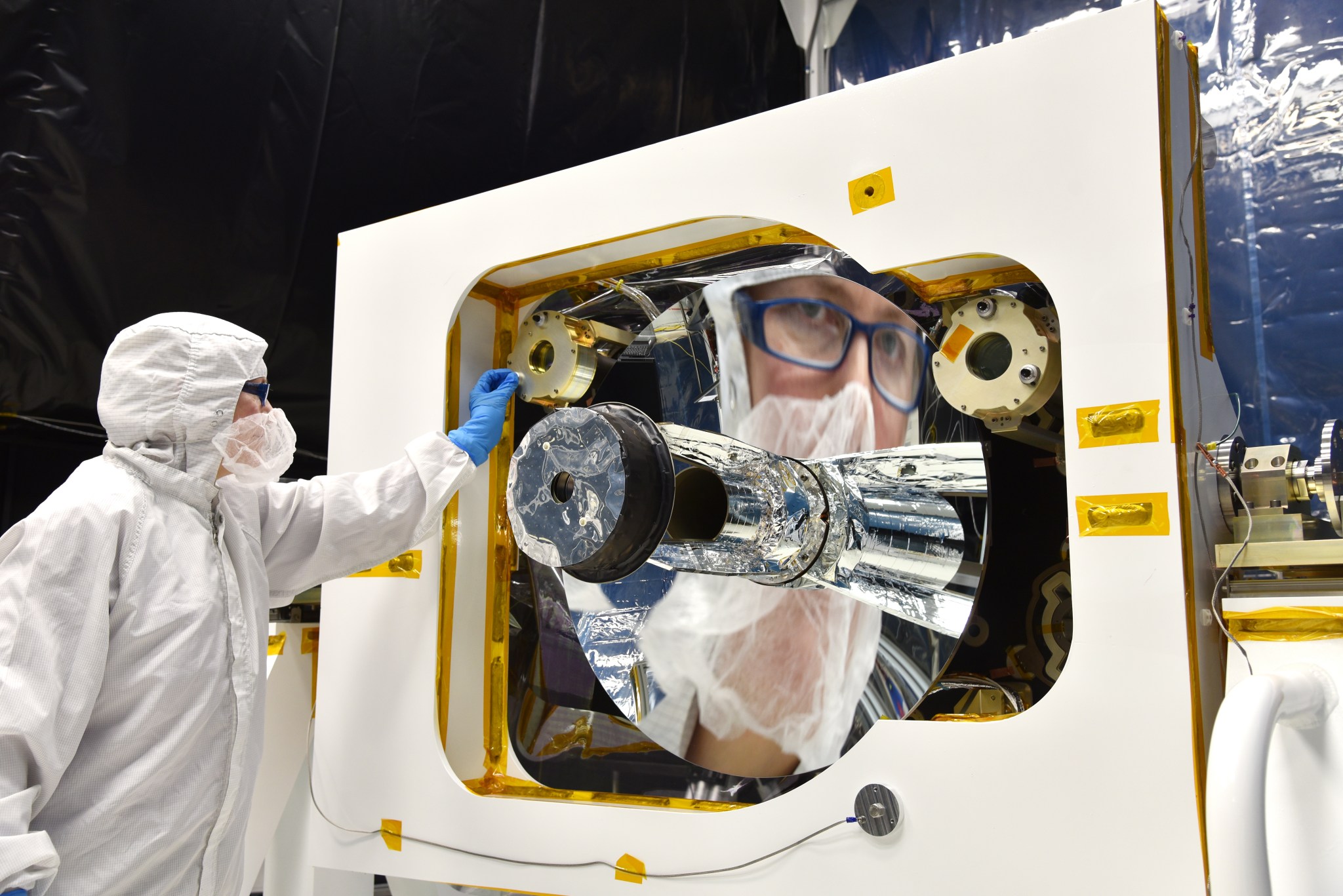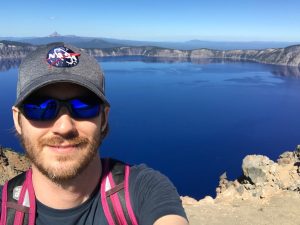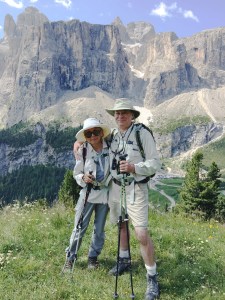Bente Eegholm is an optical engineer working to ensure missions like the Nancy Grace Roman Space Telescope have stellar vision. When it launches by May 2027, the Roman mission will shed light on many astrophysics topics, like dark energy, which are currently shrouded in mystery. Bente’s past work has included Earth-observing missions and the James Webb Space Telescope.
Name: Bente Eegholm
Title: Goddard Optics Lead for Roman Space Telescope OTA (Optical Telescope Assembly)
Formal Job Classification: Optical Engineer
Organization: Optics Branch (Code 551)
What do you do and what is most interesting about your role at Goddard?
I am an optical engineer, and I work on the Nancy Grace Roman Space Telescope as the Goddard optics lead on the observatory’s OTA (Optical Telescope Assembly). My work is a combination of optical systems work, technical meetings, and hands-on work in the labs and integration facilities. The most interesting part is that we are creating unique, one-of-a-kind instruments, which enable NASA, as well as anyone around the world, to become more knowledgeable about our universe, including our own planet.
How will your current work influence the Nancy Grace Roman Space Telescope’s future observations?
The quality of Roman’s future observations is directly tied to the telescope’s optical quality. As an optical engineer I am involved with providing the best imaging possible for the telescope and its science instruments. I work closely with the OTA management, and optical and system engineers at Goddard and at L3Harris in Rochester, New York, a mission partner that is building the OTA. The OTA consists of a series of total 10 mirrors. I am frequently on site in Rochester, most recently for the very important first light test and ensuing alignment process of the telescope. We are striving to get every photon possible delivered to Roman’s two instruments, the WFI (Wide Field Instrument) and coronagraph technology demonstration.
What motivates you as an engineer? And what was your path to your current role?
It motivates me to support a great purpose, pioneer technology for spaceflight, and to conquer the challenges that inevitably occur along the way. I also enjoy being a mentor for newer engineers, as well as giving Roman tours and presentations to Goddard visitors.
I received my M.Sc. and Ph.D. degrees in my native Denmark. The path to my current role really started in 2004 after I had obtained my green card and gotten a position with Swales Aerospace, supporting NASA Goddard’s Optics Branch, Code 551. I was a contractor for eight years, supporting the James Webb Space Telescope. This was a magnificent project to work on; it was very rewarding in terms of the optical technology to accomplish this mission, as well as the amazing and talented people with whom I was working. I supported the development and test of a speckle interferometer which we used to prove the stability of the backplane structure for Webb’s primary mirror.
After becoming a U.S. citizen, I obtained a civil servant position in 2012. I was appointed the ATLAS (Advanced Topographic Laser Altimeter System) telescope product development lead for the ICESat-2 mission, an Earth-observing mission to measure sea ice thickness from space. Both a flight and a spare telescope were built, and after successful testing and delivery of the ATLAS flight telescope, the ATLAS spare telescope was a perfect match for GEDI (the Global Ecosystem Dynamics Investigation), a mission to measure forest canopies from the International Space Station. That naturally led to me to continue to GEDI, where I was the alignment lead. GEDI launched in December 2018.
In 2019 I started working on the Roman Space Telescope and was thrilled to work on a large astronomy mission again, and in two capacities to boot. Concurrently with my role on the telescope I was optics lead on the prism assembly (a slitless spectrometer which helps enable the WFI’s study of dark energy) from 2019 until its completion and delivery to the WFI in September 2022.
I feel very fortunate to have experience from both astronomy and Earth-observing missions! It definitely widens your technical experience. Often, the telescopes and science instruments for astronomy missions typically take longer to develop and implement than the ones for Earth-observing missions. With the shorter time to launch, you have the opportunity to see the fruits of your labor fly into space within a few years, and it is beneficial to go through the steps of an entire development and launch cycle.
How do you stay updated on the latest technological advancements? How do you apply that knowledge to your work?
I enjoy learning something new every day, either by individual research or via professional organizations. I use it in my own work and in working with many optics vendors, and being a reviewer on projects and proposals. Bringing new technology to Goddard is important, and we must approve each technology for space flight before we can use it in our next missions.
What is your favorite project or challenge you’ve worked on so far in your career?
That is a really hard question. Just like you can’t choose between your children! All four of the missions I have worked on have been awesome experiences. A recent amazing event, though, was on Roman, watching the first fringes emerge on the OTA interferometer screen at the “first light” session in the integration facility. This was the result of several years of hard work for many people, and it indicated that all the 10 telescope mirrors were well-positioned, boding well for the successful final alignment, which we achieved.
What do you like best about working for NASA?
I enjoy working on unique projects, always reaching for the stars, and using new technology and methods. NASA is a unique organization, known by everyone around the globe. For example, it has been a great honor to hear from many people who follow our work how much they appreciate Webb. NASA’s work is very visible, and that commits us and holds us accountable. And we are up to the challenge!
What hobbies fill your time outside of work?
I love yoga, and hiking in nature. I also love singing in choir, especially classical music. The magnificent sound we can achieve with 75 singers, and how the different types of voices merge to convey the music, is an example of collaboration that is a bit like succeeding in a flight mission. All the different people, tasks and parts synchronized and coming together to make it work!
What advice do you have for others who are interested in working in engineering?
Maybe I am a bit biased, since both my husband and I are engineers, my son is in grad school for engineering, and my daughter is in grad school for ocean science. In my opinion, an engineering degree offers highly transferable skills, and is a great path for everyone who enjoys math and physics. People skills are also important in engineering, as most projects are performed in teams. Make sure to select math and science classes in high school, and aim for internships in college. An engineering degree requires effort and dedication, but it’s worth it!
By Ashley Balzer
NASA’s Goddard Space Flight Center, Greenbelt, Md.

Conversations With Goddard is a collection of Q&A profiles highlighting the breadth and depth of NASA’s Goddard Space Flight Center’s talented and diverse workforce. The Conversations have been published twice a month on average since May 2011. Read past editions on Goddard’s “Our People” webpage.
































